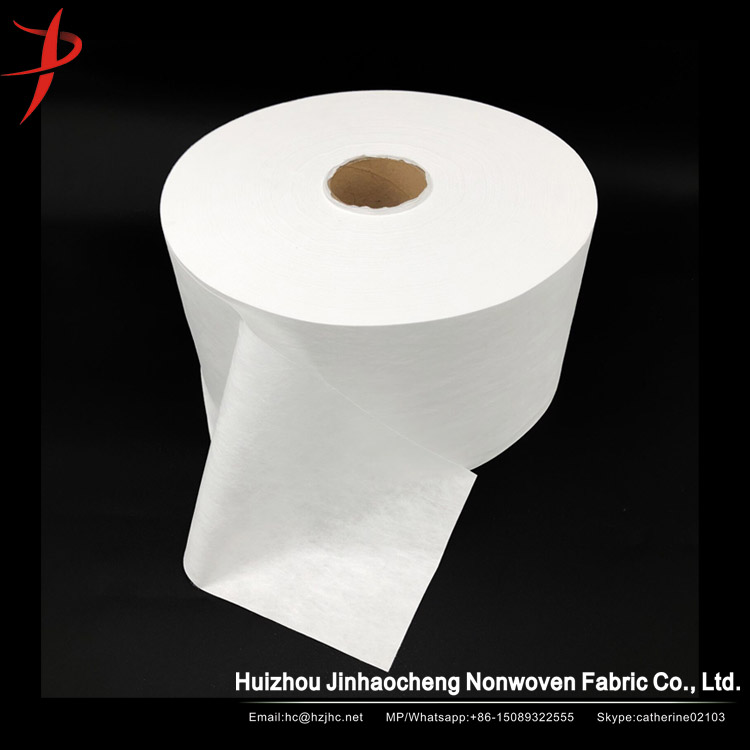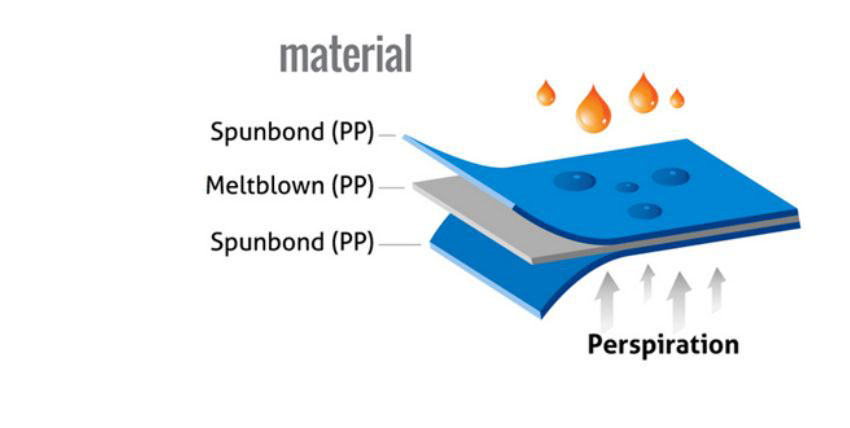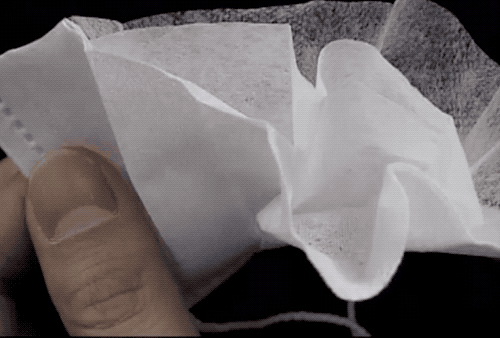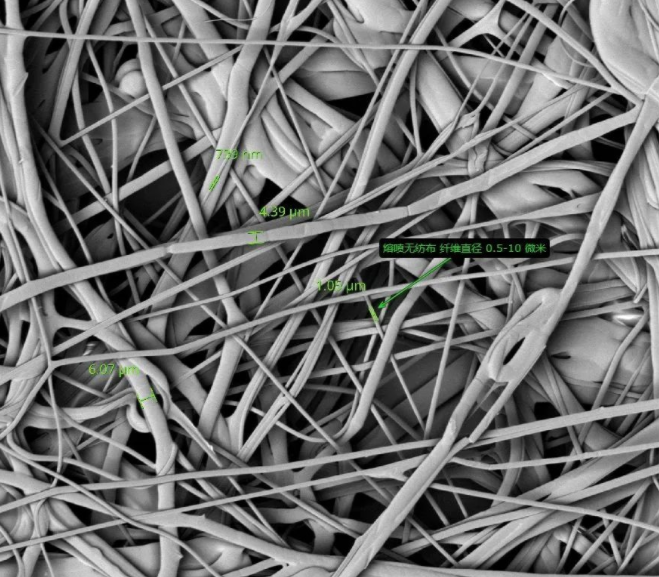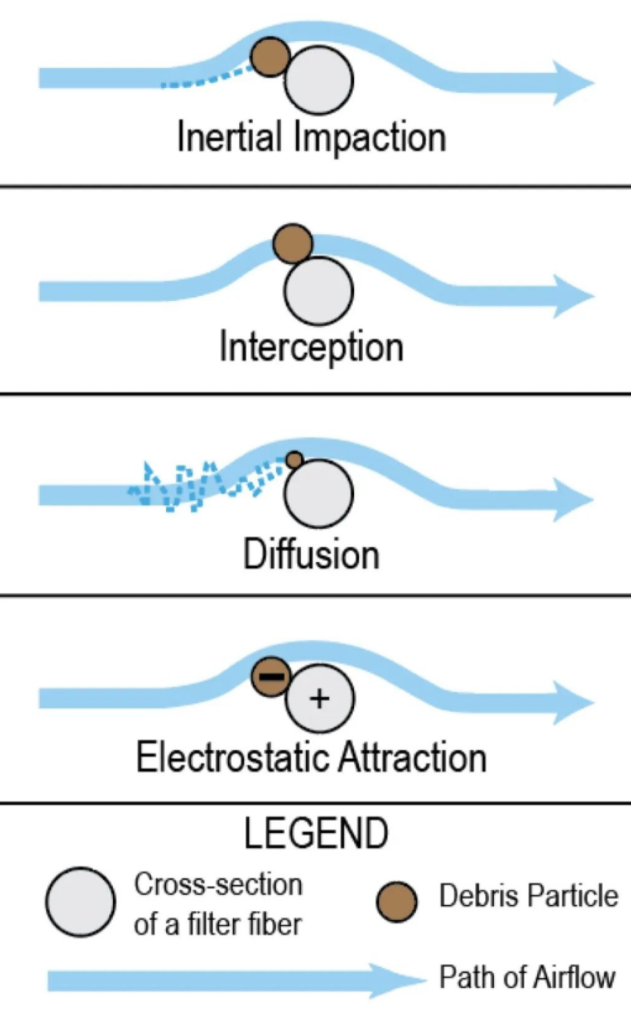Masks the core of the meltblown cloth filter material is made of polypropylene superfine fibre together with random distribution, the appearance, smooth, soft and white material fiber fineness of 0.5 to 1.0 mu m, the random distribution of fiber to provide more opportunities for thermal bonding between the fiber and thus make melt-blown gas filtration material has larger specific surface area, higher porosity (75%) or higher.Through the high voltage stationer filtration efficiency, the product has the characteristics of low resistance, high efficiency and high dust capacity.
The core of a mask
Melt-blown non-woven fabric as a new type of high efficient filter material is the "heart" masks, compared with traditional filter material, air filtration and purification efficiency into the improvement of one hundred times, is now the most suitable for biological health protection materials (activated carbon and similar material can be used for protective chemicals, against bacteria and viruses without filtration purification function).Its birth unexpectedly overnight the medical profession USES a hundred years gauze mask completely eliminated.Medical protection is generally divided into three levels according to the level of protection requirements.The light-blue "surgical masks" that we wear most often can be used for primary protection, primarily against the harmful transmission of droplets containing pathogens in daily life and production.The key measure to improve the protective ability is to add a filter layer made of melt-sprayed non-woven cloth in the middle of the mask.
The protective layer in the middle of the mask (M layer for short) is polypropylene melt-sprayed non-woven cloth, and the front and the back sides of the mask are spunbonded layers (S layer for short).Depending on the level of protection required, one to more layers can be placed in the M layer.If it is a level 1 protective mask, use an M layer.For a level 3 respirator like the N95, the M-layer may require three layers of melt-sprayed nonwoven cloth or more.Of course, the more layers of M layer, the worse air permeability of the mask, the specific products will be different.
If we tear open a mask, we will see the three layers above, namely the hygroscopic layer, the core filter layer, and the water barrier layer.
Melt spray cloth, located in the middle of the mask filter layer, can filter bacteria, prevent the spread of germs.Melt spray cloth, melt spray cloth mainly to polypropylene as the main raw material, fiber diameter can reach 1 ~ 5 micron.These ultrafine fibers with unique capillarity structure increase the number and surface area of fibers per unit area, so that the melt-jet cloth has good filtering, shielding, insulation and oil absorption properties.It can be used in air, liquid filtration materials, isolation materials, absorbing materials, mask materials, thermal insulation materials, oil-absorbing materials and wiping cloth and other fields.
Interception and adsorption
Melt blown fabric is a kind of polypropylene with high melting index, which is made of many criss-cross fibers laminated in a random direction. The diameter of the fibers ranges from 0.5 to 10 microns, and the diameter of the fibers is about one thirtieth of a hair.
As can be seen from the picture, there are still many gaps in the mask under the electron microscope. So how can we block the virus?
Masks protect against viruses by doing two things: trapping and trapping
Interception:
The filter material relies on textile or non-woven processes to achieve the density of the fibers in the space and form a certain network of pores, thus forming a "blocking" effect on the flowing air. The larger particles in the air are either "intercepted" by the collision with the fibers or by the fiber mesh blocking on the side of the filter material.For non-biological particles in the air (such as dust, PM2.5, etc.), the purification efficiency of masks mainly depends on the single interception ability of filter materials.
Adsorption:
For biological protective masks, due to the very small physical size of pathogens such as viruses, it is difficult to purify most of the harmful substances by interception of mask fiber gaps. Therefore, electrostatic adsorption has become an indispensable key feature of mask protection function.Traditional natural fibers are very weak in generating and carrying static electricity, so gauze masks have little adsorption effect.And the non-polar polymer melt jet fiber is an excellent material for electrostatic generation and retention (this point, you can compare the feeling of wearing pure cotton clothing and chemical fiber clothing), making it "inherently" has excellent adsorption performance.Researchers have done a lot of work on how to generate and maintain the electrostatic efficiency of filter materials. In mask production, mechanical or electronic means are used to enrich the electrostatic charge into molten spray materials.
Due to the unique ability of electrostatic adsorption, the melting spray technology can produce chemical fibers with a diameter one order of magnitude smaller than that of natural fibers, which is also conducive to the generation of chemical adsorption.Polypropylene melt-sprayed non-woven fabric is undoubtedly the first choice for medical protective mask materials
Post time: Nov-14-2020

